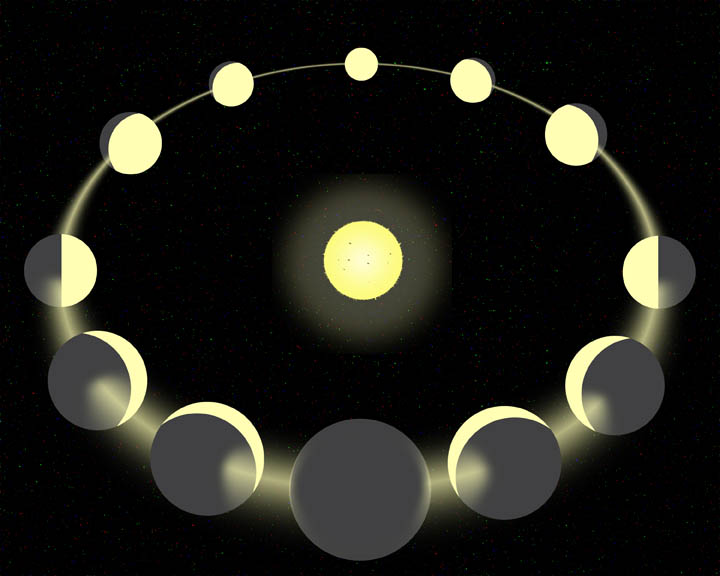Assessment of Galileo's Model
The model put forth by Galileo was inevitably going to be flawed due to the technology or lack therefore, which the scientist had available at the time. However, was the model proposed as correct as it could have been with the resources available?The heliocentric put forth by Galileo was almost and if not, entirely the same as Nicolaus Copernicus' model. This model included the sun, Mercury, Venus, Earth, Mars, Jupiter, Saturn and fixed stars. It was also believed to have included the orbits being perfectly circular. This model, which Galileo started to prove was the accurate one, did become the model which we use today, with some adjustments. These adjustments being mentioned in the previous entry but including the fixed stars being, in fact the visible universe, the addition of more planets as well as the addition of elliptical orbits.
This, when taking into account the technology available, may very well have been the most accurate possible model of the solar system or 'universe' at the time to be presented with some minor adjustments and thus, is almost completely correct by these terms. However, in comparison to the model of the solar system today, this model does hold the most important factor which made almost all others completely false, that the sun is at the centre of the universe, but is only partially correct due to its lack of depth.
The evidence and discovery of the phases of Venus and Jupiter's moons being in existence and orbit, do in fact remain strong foundational evidence of the heliocentric and current model today. With only a few minor changes delivered to the phases of Venus, in terms of the accuracy of technology available today in comparison with the 17th century Galileo had at his disposal. Alterations made to Jupiter's moons is the exact knowledge of their orbits and the addition of 60 others.



Galileo's Telescope The 64 Moons of Jupiter The Phases of Venus
At the time, a model as such was proposed due to the assistance of the telescope allowing for the study of the sun's light on Venus, and Jupiter's Moon's which resulted in the belief of a Heliocentric System. Without, the technology available today it is easy to understand why a model with little details but a correct main idea of the Sun being centred was presented (despite the fact it went against the Catholic church).
All in all, the proposed model, taking into consideration the evidence used and the technology available at the time compared to now, was quite accurate to say the most. The model presented by Galileo did not include any idea of how the universe began, which we understand to be the Big Bang Theory today, but did correctly label our solar system as being a heliocentric one with the Sun at the centre which was of great scientific importance and prompted for advancements within the field of Astronomy.
No comments:
Post a Comment